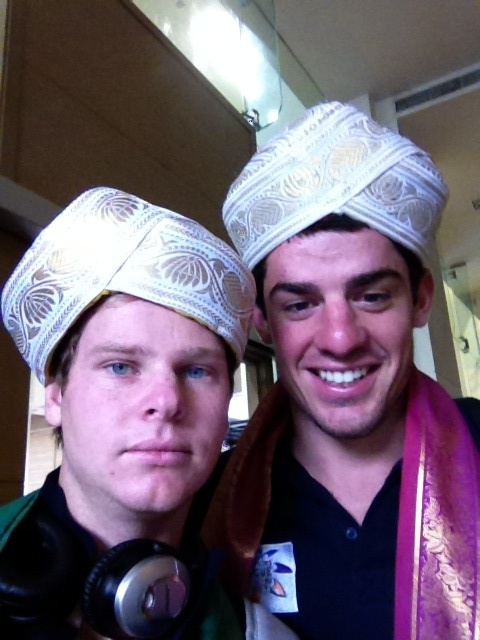
A gradual but inevitable descent into cricket-based loathing and bile.
The Fall Of The Sydney Sixers: A Study Of T20 Cricket In The Modern Age
One Day International cricket is dead. All that remains is for the culmination of the 2015 World Cup to confirm it. After that it will be nothing more than an oddity, a relic only really pursued on the sub-continent, where they often have trouble catching up with the latest fads it must be said. But everywhere else it will be recognised that the time of the ODI has passed.
And what has killed it? T20 cricket of course. The format that began as nothing more than a jokey hit around, kind of like Sri Lanka in Test cricket away from home, has now matured into something far more. A 20 over innings isn’t just an excuse to throw the bat any more, but rather teams actively set about to build a total. Last year’s T20 World Cup Final was the perfect example. Ordinarily the West Indians would have fallen apart after they floundered early. Plan A failed so everyone might as well go home. But instead teams now have a Plan B, or even a Plan C. It’s that sort of tactical flexibility that has been the true death knell for the 50 over format. If T20 cricket had remained nothing but a bit of hit and giggle, it would never have progressed and the novelty would have worn off. But instead it has thrived and grown exponentially, whilst the other limited overs format has declined to the point of irrelevance.
So what’s all this got to do with the Sydney Sixers? Everything. Late last year the Sixers were the best T20 side in the known universe. Probably beyond it too. Their success was born through a long list of batting and bowling options. A reliance on those sorts of bit and pieces players most ‘proper’ cricket fans loathe. Players like Moises Henriques.
Fast forward a few months though and everything has gone to pot. The Sixers are saved from being the worst T20 side in Australia only by the truly abominable Sydney Thunder. What has gone wrong? The obvious culprit would be their losses in personnel in the intervening period. Pat Cummins is gone, as is Shane Watson. Mitchell Starc is hanging around with his new mates in the Test team, whilst Josh Hazlewood is injured. These loses would be enough to gut any team, but surprisingly it’s not the absence of so many quality bowlers that has hurt the Sixers. Rather it’s their batting that has brought them low.
In this season’s Big Bash the Sixers have been able to keep opponents to competitive totals, but have consistently fallen over when chasing them. On paper there is nothing wrong with their batting line-up. Michael Lumb, Nic Maddinson, Daniel Hughes, Brad Haddin, and Moises Henriques are all good options in this format. And then there is Pune legend Steven Smith of course. In fact it’s Steve, not surprisingly, who we would like to focus on.
The main issue the Sixers have encountered this season has been the loss of early wickets. Despite (or perhaps because of) rotating their openers heavily, they just can’t shake the habit of being two down for bugger all at about the fifth over mark. At this point they have two options really: continue throwing the bat or try and consolidate. Obviously the first option is the popular one with most outfits. Whilst we couldn’t be bothered trying to work out the stats to back it up, we’d hazard a guess that that approach is probably successful in getting teams out of trouble maybe half of the time. The problem for a team like the Sixers, who at the start of this season boasted a winning run of 13 straight games, half of the time isn’t good enough.
Which is why the Sixers choose to consolidate, cut down on the damage and rebuild. And central to that philosophy is our man Steve. The one constant in Sixers games this season is that when they lose wickets they go into their shells, making the middle section of their innings bloody boring for the spectator. There are dot balls aplenty, sometimes even the odd maiden. Every now and then there might even be a boundary, but don’t hold your breath. If Smith (along with at times Henriques and Haddin) survives long enough to reach 25-30 runs, he will have done it usually at less than a run a ball. It’s only with the overs running out, but importantly, wickets still in hand, that the shackles are loosened.
The problem is that cutting loose has almost inevitably led to wickets tumbling, undoing all the good build-up work. This is shown by the fact that both Smith and Haddin have good averages in this years tournament, but both also have a strike rate in the 110’s, as does Henriques. Although his average is shit, so maybe people are right to hate him. Those low strike rates are the reason why the Sixers have been unable to post big totals this season. A potential total of 160+ quickly disappears when the wickets begin to fall, and they usually have to settle for a sub-par 130 or so.
What’s the point of this article then? Well, there isn’t one really, other than to highlight that the Sixers are not floundering near the bottom of the Big Bash on account of them being utter crap (although that probably plays a part), but rather, if anything, they have perhaps tried to be too cute on occasion. Sometimes your best bet in T20 cricket is to just throw the bat and damn the consequences. That sort of risk taking is what makes it enjoyable to watch. The Sixers, conversely, are trying to play it like a modern 50-over game; play the percentages, limit the risks and slowly consolidate in the middle overs. It’s fair to say that if such an approach is failing whilst they possess a bona fide genius like Steve Smith on their books they may be over-reaching a little.
But that’s not to say that the Sixers philosophy is hopelessly flawed, rather it’s their execution that has been. Indeed it may be a precursor of how T20 cricket will be played in the future, particularly when teams begin to take the format more seriously. Which will no doubt lead to the introduction of new rules, such as more PowerPlays, in order to keep the middle overs interesting. In a way it shows that T20 cricket is mirroring the developments seen in 50-over cricket over the years, only that these developments are happening at a comparatively frenzied pace.
One day the Sixers might be seen as pioneers, and Steve Smith as the greatest visionary the game has ever known. It’s the least the man deserves, really. But in the meantime they might want to shelve such aspirational goals, and get back to winning a few games.




No Comments
Post a Comment